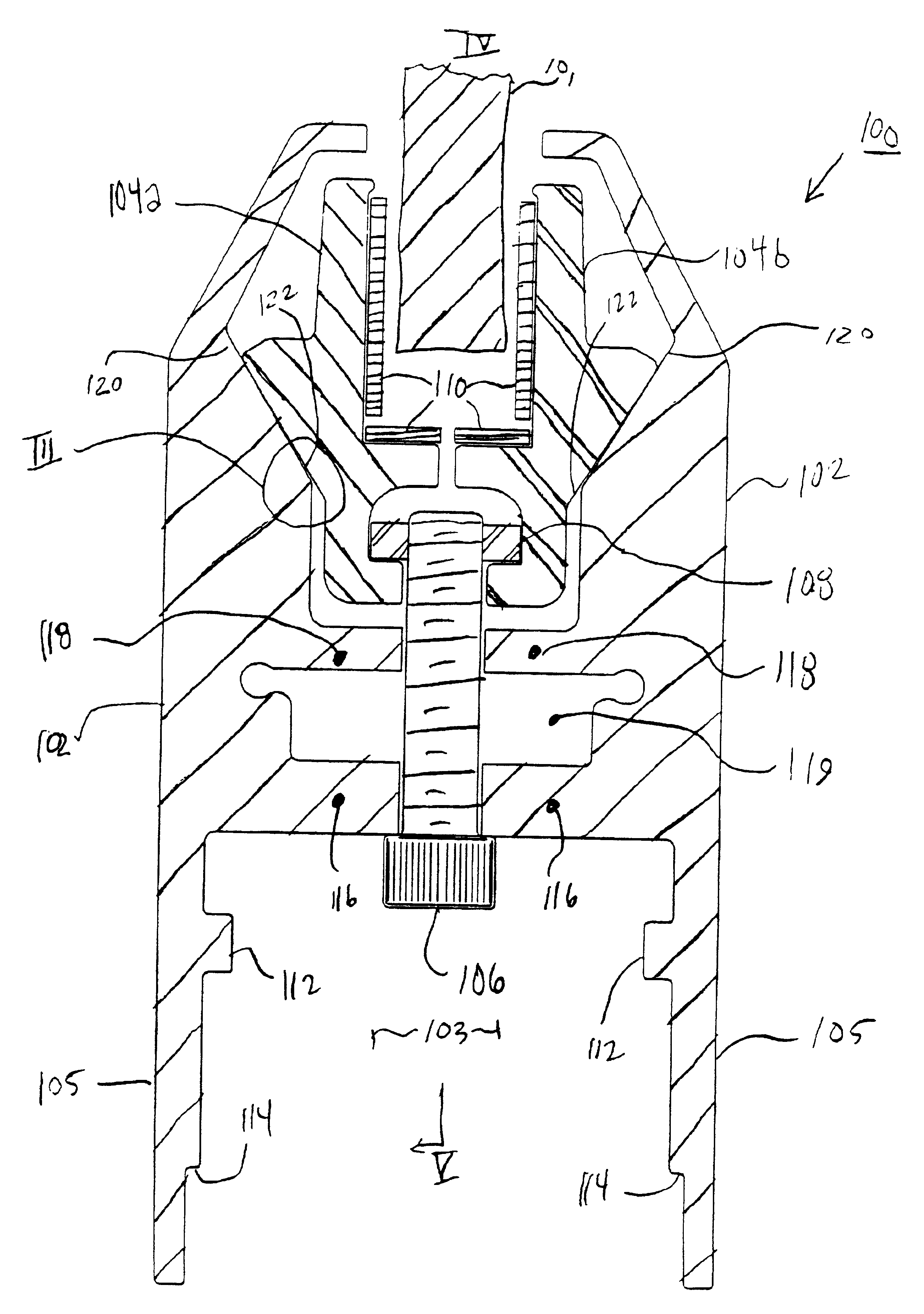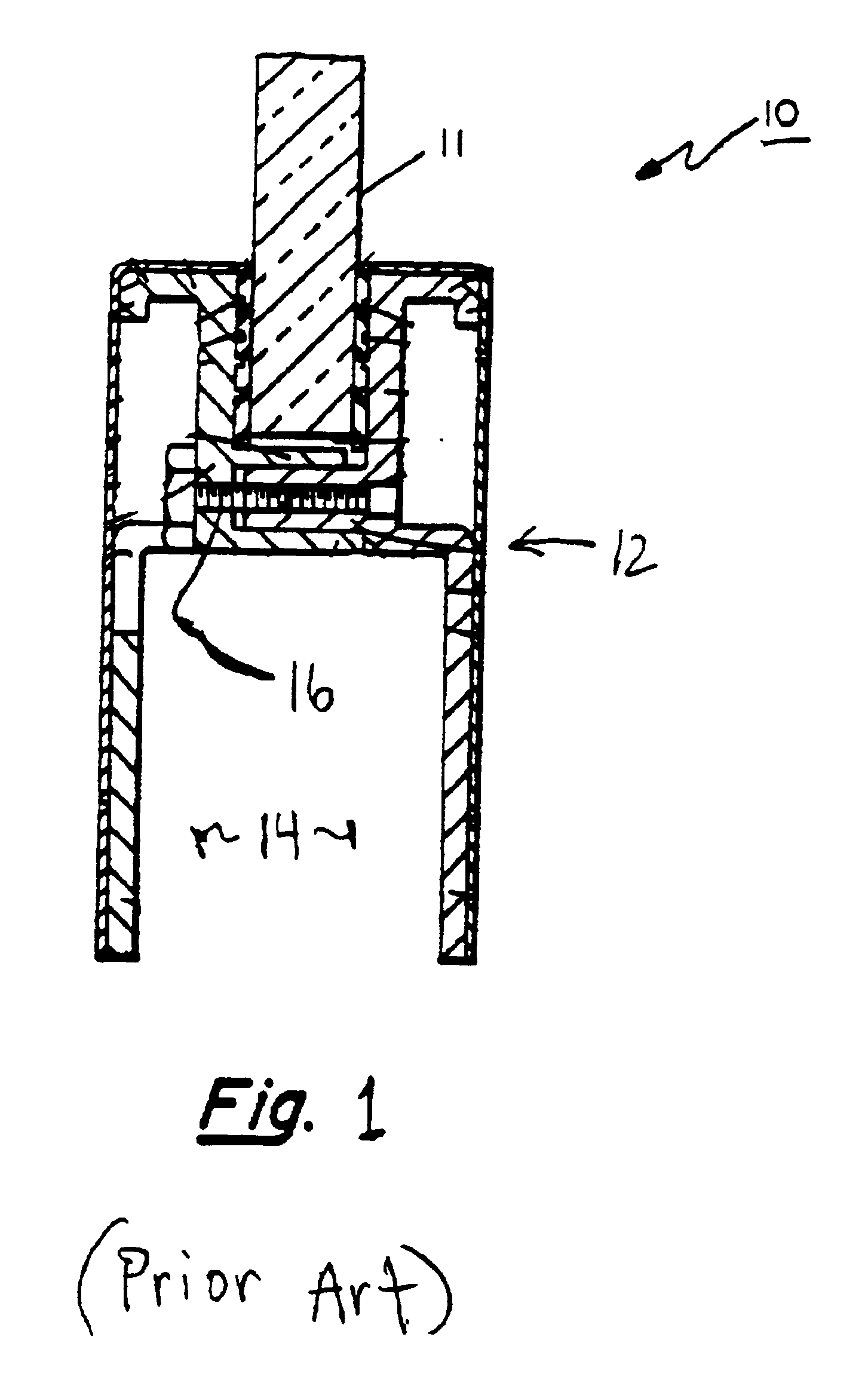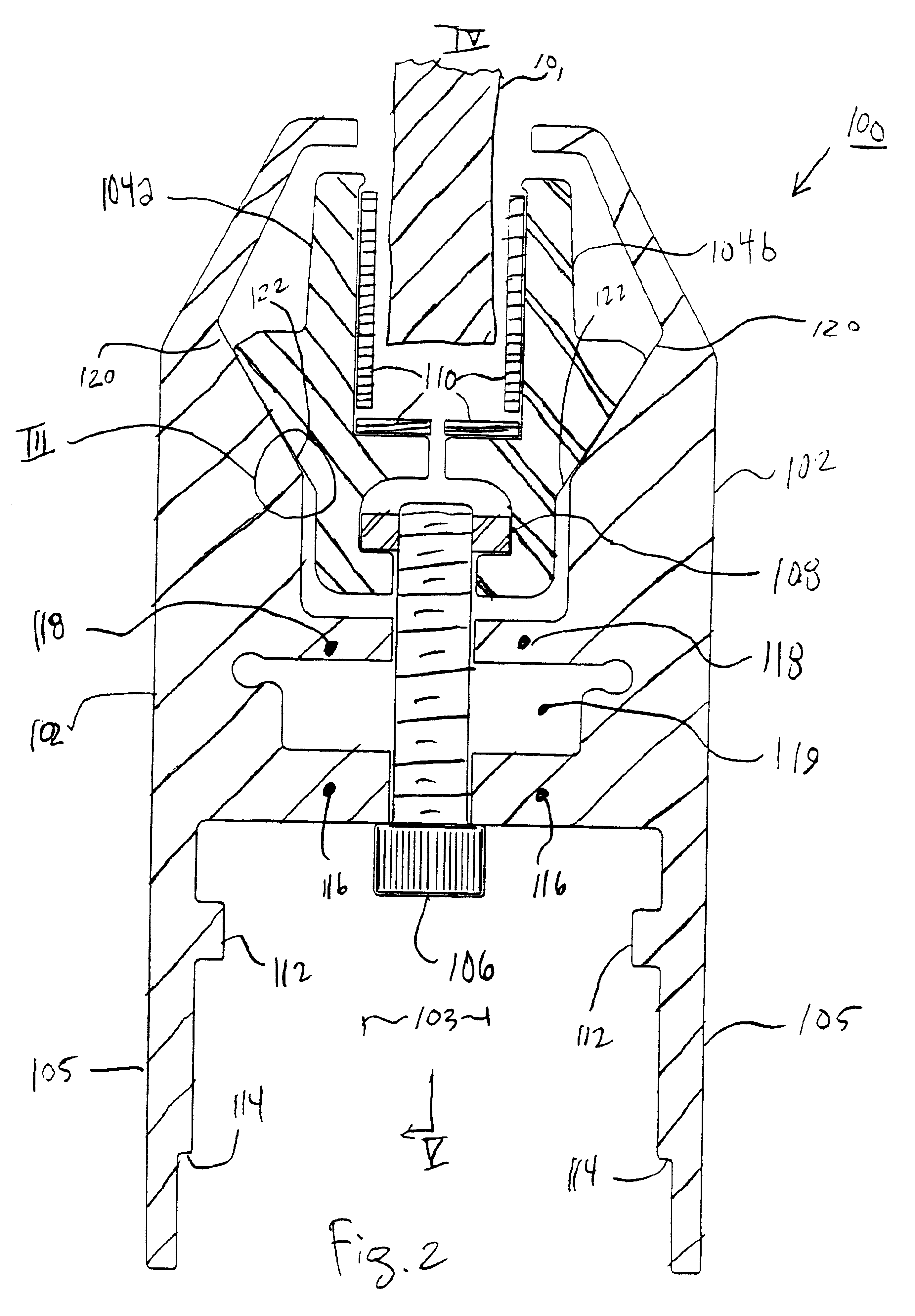Door rail system
- Summary
- Abstract
- Description
- Claims
- Application Information
AI Technical Summary
Benefits of technology
Problems solved by technology
Method used
Image
Examples
second embodiment
[0068]FIG. 12 shows a rail system 200 according to the present invention. Rail system 200 includes housing 202, clamp member 204 and screw 206. As screw 206 is tightened, it forces clamp member 204 to move generally in the driven direction of arrow A. Because housing 202 and clamp member 204 are in contact at surfaces inclined with respect to the screw-tightening direction A, this causes the arms 208, 210 of clamp member 204 to move toward each other (in the clamping directions respectively shown by arrows B and C) to provide clamping force on a pane (not shown). It is noted that this embodiment uses a unitary clamp member 204 that flexes to provide the clamping force, and that the driven direction is oriented toward the pane, rather than away from it (as seen in the FIG. 2 embodiment).
third embodiment
[0069]FIG. 13 shows a rail system 300. While rail system 300 is not a preferred embodiment, it does serve to illustrate some of the breadth of variation possible in effecting clamping by uses of inclined surfaces according to the present invention. Rail system 300 includes housing 302, first clamp member 304a, second clamp member 304b and screw 306. Screw 306 is tightened to force nut strip 308 in the driven direction indicated by arrow D. This in turn forces clamp members 304 to move in driven direction D.
[0070]When first clamp member 304a moves in driven direction D, contact between its inclined surface 322 and roller 324 (which is built into housing 302) forces first clamp member 304a to move by translation and / or rotation in the clamping direction of arrow E to clamp down on a pane (not shown). While the roller 324 would add expense and potential structural weakness, it could potentially: (1) reduce wear on housing 302 and clamp member 304a; and (2) guide an irregular and / or cur...
first embodiment
[0072]Now that some possible variations have been explored, the focus will return to FIGS. 2 and 3 so that some of the specific advantages of this preferred embodiment can be explained. As shown in FIG. 2, mating, inclined surfaces 120 and 122 are close to parallel, but not exactly parallel. As shown in the magnified view of FIG. 3, inclined surface 120 is inclined at angle X from the horizontal direction, while inclined surface 122 is inclined at a slightly steeper angle Y from the horizontal. More particularly, angle X is preferably 59 degrees, while angle Y is preferably 60 degrees.
[0073]However, wide variation in angles X and angle Y, as well as in the difference between angle X and angle Y, are possible. Different choices for these angles and for the difference between these angles can be used to optimize: (1) the correlation between driving torque of screw 106 and clamping force; and (2) the distribution of clamping force along pane 101.
PUM
 Login to View More
Login to View More Abstract
Description
Claims
Application Information
 Login to View More
Login to View More - R&D
- Intellectual Property
- Life Sciences
- Materials
- Tech Scout
- Unparalleled Data Quality
- Higher Quality Content
- 60% Fewer Hallucinations
Browse by: Latest US Patents, China's latest patents, Technical Efficacy Thesaurus, Application Domain, Technology Topic, Popular Technical Reports.
© 2025 PatSnap. All rights reserved.Legal|Privacy policy|Modern Slavery Act Transparency Statement|Sitemap|About US| Contact US: help@patsnap.com



